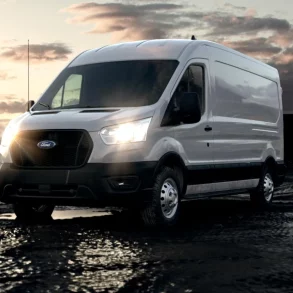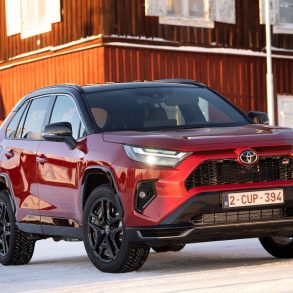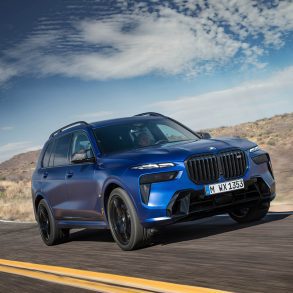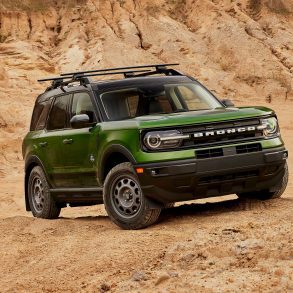Sales of New Cars In the U.S – Data, Trends, Charts & Analysis
Here you will find United States sales figures for the overall auto industry. This top level report is not broken out by manufacturer, brand or model. This report is designed to show you the size of the total U.S automotive market in terms of new unit sales. It includes both trucks and passenger vehicles. The raw data can be found at U.S. Bureau of Economic Analysis.
U.S Automotive Sales Data & Recent Highlights
The rest of the early to mid 2000s saw a period of relatively flat sales (some years were slightly up, some were slightly down) till 2006 when things slowed down again meaningfully. Sales had already started to cool in 2006 and 2007 (declines of -2.27% and 3.45% respectively) when the mother of all financial crisis’ really devastated the industry in terms of new car sales. 2008 saw a decline in new vehicle sales of 18% followed by 2009 which saw sales decline a further 21%.
From a peak of almost 18 million new car sales in 2000, it took another 15 years till 2015 for the new car market to get back to that mark. Things stayed flat in 2016 and were slightly down in 2017 with things holding steady in 2018. It remains to be seen how things change in the U.S automarket in terms of new car sales but as things like the sharing economy and alternative mobility continue to concern automakers while a booming economy continues to push the industry along.
The COVID-19 pandemic led to factory closures and supply chain disruptions, which caused a shortage of new cars. The economic recession caused by the COVID-19 pandemic led to job losses and decreased consumer spending, which also affected the new car sales market. The shift to online shopping during the COVID-19 pandemic also affected the new car sales market, as consumers were less likely to visit dealerships in person.
The US new car sales market has been recovering in recent months, after being hit hard by the COVID-19 pandemic and the global chip shortage. However, the market is still facing some challenges, such as high inflation and rising interest rates. The US new car sales market is expected to remain strong in the coming years, but the pace of growth is expected to slow down. The market is expected to grow by an average annual growth rate of 2.5%.
Here are some of the new car sales trends in the US:
- The increasing popularity of electric vehicles: Electric vehicles are becoming increasingly popular in the US, as the government offers incentives to encourage people to buy them. In 2022, electric vehicles accounted for 5.0% of new car registrations in the US. This is up from 2.2% in 2021.
- The growing popularity of SUVs: SUVs are also becoming increasingly popular in the US, as they are seen as more practical and comfortable than sedans. In 2022, SUVs accounted for 46.6% of new car registrations in the US. This is up from 42.6% in 2021.
- The growing popularity of online car buying: More and more people are buying cars online in the US. In 2022, 15.0% of new car purchases were made online. This is up from 12.0% in 2021. The convenience and flexibility of online car buying are driving its popularity.
- The increasing use of technology in cars: Cars are becoming increasingly technologically advanced, with features such as autonomous driving, advanced driver assistance systems, and infotainment systems becoming more common.
- The growing demand for sustainable cars: Consumers are becoming more aware of the environmental impact of cars, and are demanding more sustainable options. This is driving the development of electric vehicles and other low-emissions vehicles.
These are just some of the new car sales trends in the US. The market is constantly evolving, so it is important to stay up-to-date on the latest trends.
Here are some other trends that are expected to shape the US automotive market in the coming years:
- The rise of mobility as a service (MaaS): MaaS is a concept where people can access transportation services on demand, rather than owning their own car. This could lead to a decrease in the number of cars on the road and a more sustainable transportation system.
- The development of self-driving cars: Self-driving cars have the potential to revolutionize transportation, making it safer, more efficient, and more accessible. However, there are still many challenges that need to be overcome before self-driving cars become a reality.
- The growth of the electric vehicle market: The electric vehicle market is expected to grow rapidly in the coming years, as governments around the world introduce policies to encourage the adoption of these vehicles.
- The increasing importance of connectivity: Cars are becoming increasingly connected, with features such as internet access, Wi-Fi, and telematics becoming more common. This connectivity is opening up new possibilities for car manufacturers and consumers alike.
Interesting U.S New Car Sales Stats
- Best Sales Year Volume: 17,547,028 units sold
- Worst Sales Year Volume: 10,210,000 units sold
- Average Sales Per Year: 14,581,763.4 units sold
- Total Sales Units (since 1970): 758,251,697 units sold
Top 10 Most Popular Automotive Brands In the U.S
Here are the top 10 most popular automotive brands in the USA. Toyota is the top-selling automotive brand in the USA, followed by Ford and Chevrolet. Honda, Nissan, Volkswagen, Kia, GMC, Ram, and Hyundai are also among the top 10 most popular automotive brands in the USA. These brands are popular in the USA for a variety of reasons, including their reliability, fuel efficiency, and affordability. They also offer a wide range of models to choose from, which caters to the needs of different consumers.
- Toyota
- Ford
- Chevrolet
- Honda
- Nissan
- Volkswagen
- Kia
- GMC
- Ram
- Hyundai
US New Motor Vehicle Sales
Below is the unit volume sales and unit growth rate of the vehicle industry in the United States.
US New Motor Vehicle Chart
U.S Market New Vehicle Sales Units by Month
Below we have a table that shows United States Automotive sales since 2005 broken out by month. This is on a unit basis. This is new vehicle sales in the US since 2005, including passenger cars, commercial vans and light trucks.
Source: U.S. Bureau of Economic Analysis










:p
Good Information. I will be coming to this site more in the future.